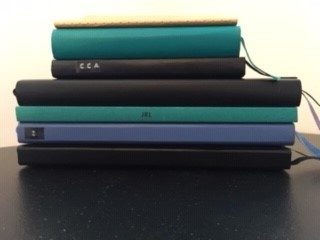I spent a lot of time recently looking at note taking apps. I read all about “building a second brain” and created a whole load of processes to support doing that. I had this idea that I could use those same processes to support writing fiction. It was all setup and working and I stuck with it for about two days before I threw it all in the bin.
The thing is, and this is a truth that I’ve been fighting against for probably five or more years, note taking isn’t naturally how I work. Sure, I can do it but I’m fighting against my inclination.
Digital tools work in a specific way and if you use them that’s the way you have to work. As I found, just having the app creates a requirement to do a process. I had a note taking app, so I needed to take notes.
Before I started down the digital note taking route, I was keeping a paper notebook in my pocket, but I didn’t use it very often and I thought that was proof that paper notebooks didn’t work for me. But the truth is, I used it the amount that I naturally take notes without being prompted. When I switched to a digital system it created an artificial use requirement.
It took me a long time to realise that I don’t need to constantly be taking notes and that I shouldn’t feel guilty when days go by with nothing new being added. I have never had trouble coming up with ideas for stories so there is no need to build this system.
